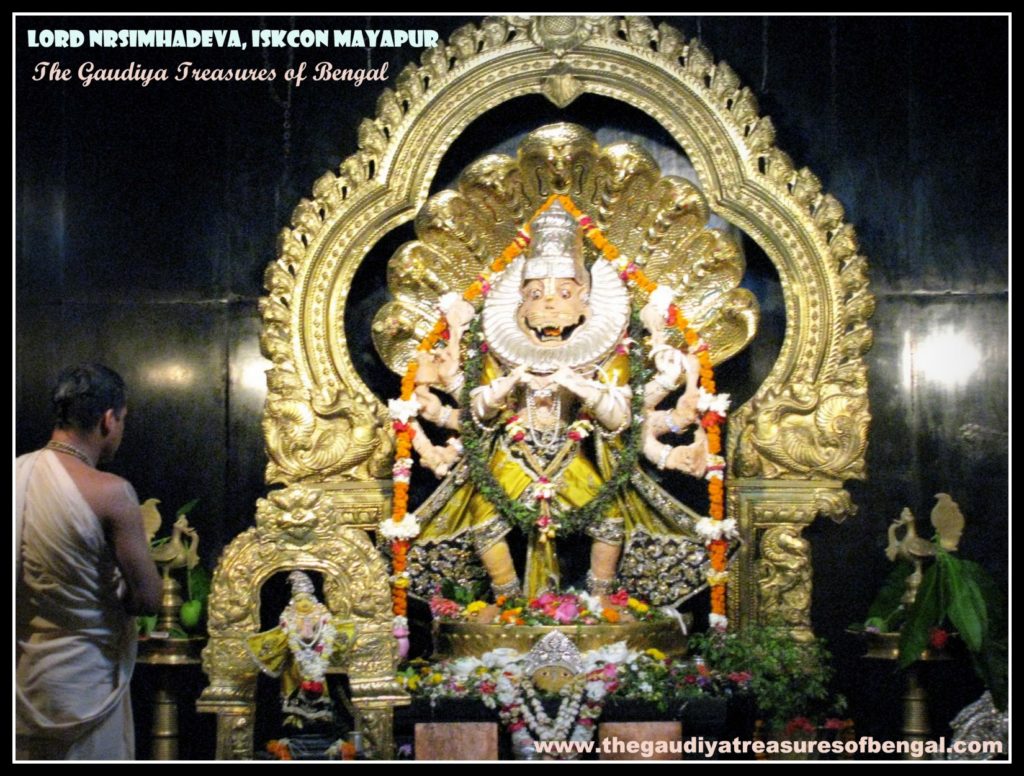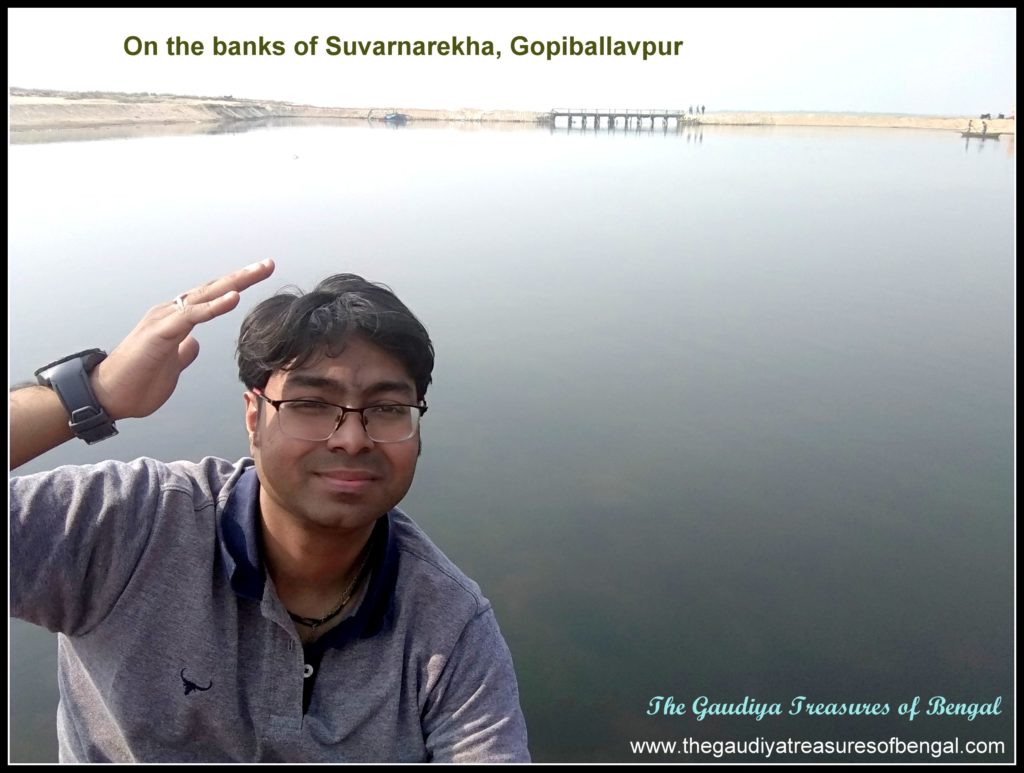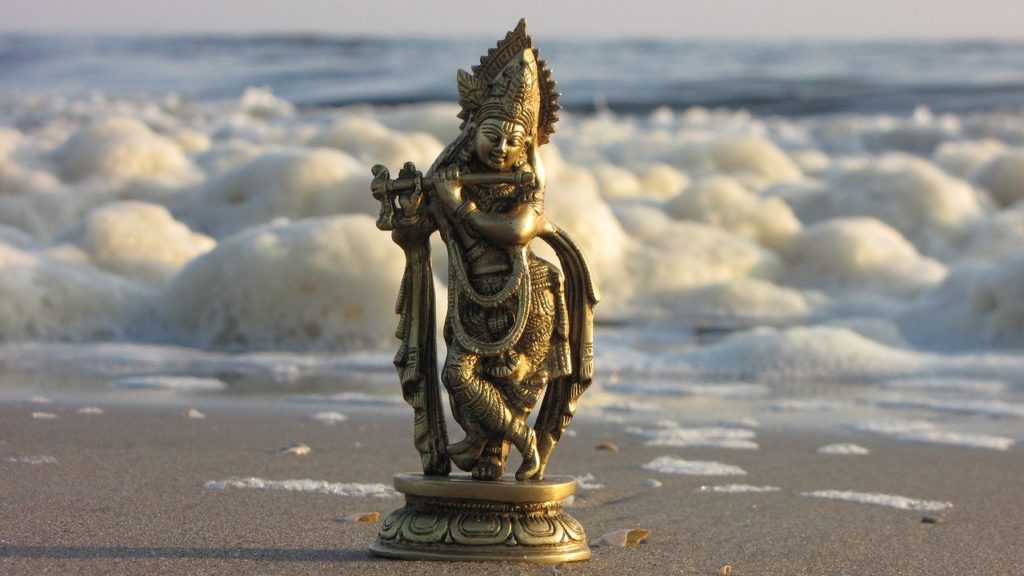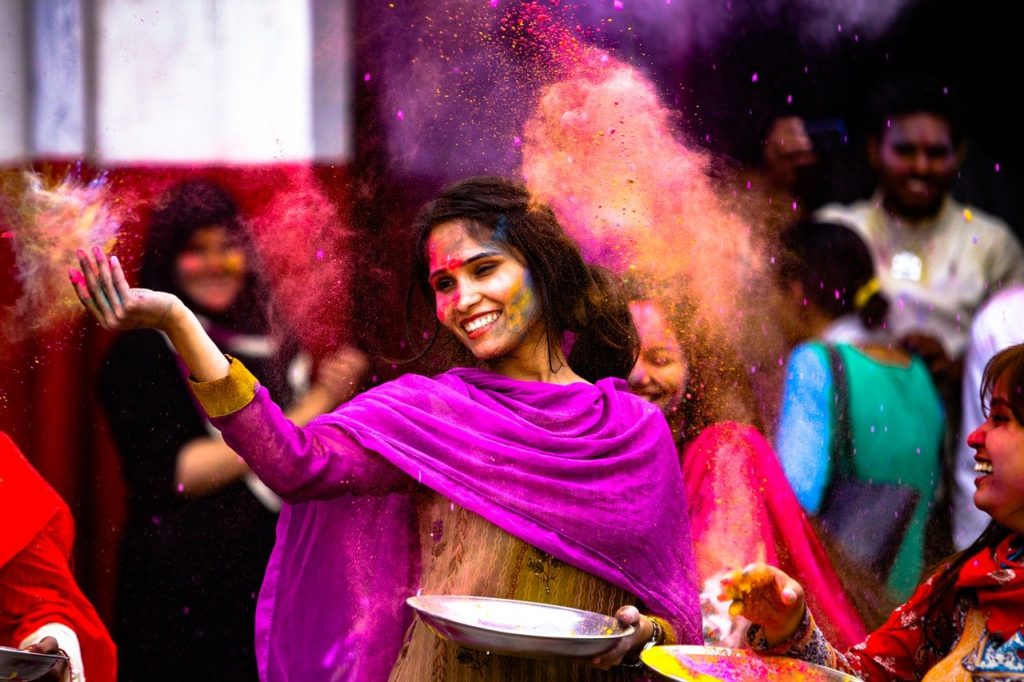How old is the Indian civilization and its Sanatan Dharma?
In his Discourse on Sanskrit and Its Literature, given at the College of France, Professor Bournouf addresses this question as to how old is the Indian civilization and its Sanatan Dharma? He says, “We will study India with its philosophy and its myths, its literature, its laws and its language. Nay it is more than India, it is a page of the origin of the world that we will attempt to decipher.”
Max Mueller observed in history of Sanskrit Literature, “In the Rig-veda we shall have before us more real antiquity than in all the inscriptions of Egypt or Ninevah…the Veda is the oldest book in existence..”
The famous German thinker, Schopenhaur, remarked in the introduction to his book, ‘The Upanishads’, “In the whole world there is no study so beneficial and so elevating as that of the Upanishads. It has been the solace of my life (and) it will be the solace of my death.”
What are the Vedas ?
Before investigating the antiquity of the Indian or its Vedic civilization, we should first of all try and learn more about the Vedic literatures. The Sanskrit root vid means ‘to know’. Hence the word ‘Veda’ means knowledge. The term Vedic refers to the literature and teachings contained in the Vedas. The Vedic scriptures are the spiritual literature of the ancient Indian culture, written primarily in the Sanskrit language. They comprise of a huge collection of books encompassing a wide variety of subjects, including but not restricted to material (mundane), religious (ritualistic) and spiritual (monotheistic) knowledge.
The Vedas are immense both in their size and scope. Its sheer volume easily surpasses any other religious scriptures of this world. Vedas even surpass the lengthy ancient works such as Homer’s epics and the sacred cannon of China. For instance, Mahabharata, one of the Vedic epics, has 110,000 four-line stanzas, making it the world’s largest poem – approximately eight times as lengthy as Iliad and Odyssey combined. Ramayana, another Vedic epic, consists of 24,000 couplets. The Vedic literature comprise not only of the Rig, Yajur, Atharva and the Sama vedas but also of Upanishads, Puranas, Bhagavad Gita and itihasas like Ramayana & Mahabharata. It encompasses all literatures that uphold the Vedic teachings, tradition and culture.

The Vedic literatures not only deal with life as we understand it but it also deals with the knowledge of nature, universe, and a grand hierarchy of living beings – nonhumans, humans & humanoids. There is a large section of the Vedas that deal with detailed accounts of the non-material worlds beyond the fabric of time and space. For the earthly humans, however, the Vedas prescribe a balance between their spiritual and material lives. The Vedic social system combines the material impetus with the spiritual dynamics and places a great emphasis on civilization as a precise tool for both material and spiritual upliftment.
So how old is the Indian Civilization? – Digging into the Past
#1 A city Dating back to 7500 BC
As was announced on January 16, 2002, that the Indian scientists found pieces of wood, remains of pots, fossil bones, etc near the coast of Surat, Indian Science and Technology Minister Murli Manohar Joshi told a news conference. He said, “Some of these artifacts recovered by the National Institute of Ocean Technology from the site, such as the log of wood date back to 7500 bce, which is indicative of a very ancient culture in the present Gulf of Cambay, that got submerged subsequently.” Current belief is that the first cities appeared around 3500 bce in the valley of Sumer, where Iraq now stands. “We can safely say from the antiquities and the acoustic images of the geometric structures that there was human activity in the region more than 9,500 years ago (7500 BC),” said S.N. Rajguru, an independent archaeologist.

#2 How old is the Indian Civilization? – Discovering River Saraswati
The legend of the mighty Saraswati river has lived on in India since time immemorial. The ancient Vedic scriptures are full of tantalizing hymns about it being the life-stream of the people. References to river Saraswati can be widely found in the Rig Veda, Mahabharata, Ramayana, Bhagavata Purana, Vamana Purana, Upanishads, etc. The Vedic scriptures are the oldest in the world and are atleast 5000 years old.
An Indian and French archaeological field team on the ground, coordinating with a French SPOT satellite in space, have discovered that the Saraswati River, as described in the Vedas, is a fact, not mythology. Vividly exposing the signatures of old rivers and their branches, data from SPOT shows that the river Saraswati did exist. The Satellite’s sensors and pointable optics reveal the dried bed of a river stretching from the present Ghaggar River and flowing four miles wide, in the region of India, west of what is now Delhi. In what is now Punjab, the Satellite imagery has shown the Saraswati’s bed to be twelve miles wide. From space, researchers can detect that Saraswati had several tributaries, watering an immense area of fertile soil. Traces of artificial canals watering remote agricultural locations are also visible.

#3 How old is the Sanatan Dharma? – Ancient Hindu Temples found worldwide
The Archaeological survey of India unearthed a monolithic sandstone Shiva Linga of 9th century CE during its conservation project at Vietnam’s Cham temple complex in My Son sanctuary. India’s External Affairs Minister Dr S Jaishankar who shared the news on Twitter (on May 27,2020) termed it as ‘Reaffirming a civilizational connect’.
The Chinese city of Quanzhou bears ample proof of the cultural connect between ancient India and China. The famous Kaiyuan temple – a major tourist destination – in Quanzhou has carvings that were influenced by Hindu styles. Hundreds of sculptures and carvings were excavated in the city and surrounding areas in the middle of the last century. They threw up the proof that tamil sea traders had made Quanzhou an important port-of-call, approximately a thousand years ago. The Quanzhou maritime museum presently houses these exhibits and among them are Vishnu and Lakshmi idols.
A Cangkuang villager hunting for termites under a tree discovered a sharp hand-carved stone. Further investigation revealed that the location was the site of an ancient Vedic/Hindu temple. ony Djubiantono, head of West Java’s Bandung Archeology Agency says, “Based on a preliminary finding of various remains there are indications that this is a Hindu temple built in the seventh or eighth century.”
The ancient Nandeeshwara(Shiva) temple at Malleswaram was discovered recently but it has stood for 7,000 years on that spot. Being buried over the years hasn’t diminished its aura at all. The temple was discovered only recently when the land was being dug up and it was found that the temple had remained untouched over the years. At the far end of the temple courtyard, stood the deity of Nandi with eyes painted in Gold and from his mouth a stream of water flowed directly onto a Shiva Linga made out of the same black stone at a lower level.
Nearly 40 kilometers from the Thai-Cambodia border the Chen Sran temple has been discovered in the jungle of the northern Preah Vihear province. It was built in the ninth or tenth century, and is dedicated to the Vedic tradition. The temple stands 15 meters tall, and is 150 meters in length by 100 meters wide. Nearly 50 percent of the structure is damaged and most of its artifacts have been plundered, even though there is no decent road to the temple.
Archaeologists have found a statue of Nandi, the sacred bull that carried the Hindu god Shiva, among the ruins of what is believed to be an ancient temple at an excavation site in Yogyakarta in Indonesia.
Oldest ever Idol discovered so far is the Lion-Man ivory sculpture, which is estimated to be 40000 years old. It was discovered in the Hohlenstein-Stadel, a German cave in 1939. This 29.6 cm (11.7 inches) in height, 5.6 cm wide, and 5.9 cm thick sculpture was carved out of woolly mammoth ivory using a flint stone knife. The Vedic scriptures teach us that Krishna had appeared in this divine form of a half-man, half-lion with a lion face, in order to protect His devotee Prahlada and to stop the spread of irreligion, personified by the demon Hiranyakasipu. The Supreme Lord in this form is worshipped as Lord Narasimha.

An ancient Vishnu idol has been found during excavation in an old village in Russia’s Volga region, raising questions about the prevalent view on the origin of ancient Russia. The idol found in Staraya (old) Maina village dates back to 7-10th century AD. Staraya Maina village in Ulyanovsk region was a highly populated city about 1700 years ago (much older than Kiev) and so far it is believed to be the mother of all Russian cities. “We may consider it incredible, but we have ground to assert that Middle-Volga region was the original land of Ancient Rus. This is a hypothesis, but a hypothesis, which requires thorough research,” Reader of Ulyanovsk State University’s archaeology department Dr Alexander Kozhevin told state-run television Vesti.
#4 How old is the Indian civilization? – Major Anthropology Find Reported in India
Scientists have found evidence of the oldest human habitation in India, dating to 2 million years, on the banks of the Subarnarekha River. The 30-mile stretch between Ghatshila in the province of Jharkhand and Mayurbhanj in Orissa has reportedly yielded tools that suggest the site could be unique in the world, with evidence of human habitation without a break from 2 million years ago to 5,000 B.C. which makes it more important than even the Aldovai Gorge in East Africa, the Somme Valley of France, Stonehenge in England, the Narmada basin in Madhya Pradesh and the Velamadurai-Pallavaram rectangle in Tamil Nadu. Anthropologist S. Chakraborty told the Calcutta Telegraph: “There are no signs of terra incognito (a break in the continuum) in the Subarnarekha valley, unlike any other site in India. Some of the heavier tools resemble those found in the East African stone-age shelters, used by the Australopithecus.”

#5 How old is the Sanatan Dharma? – Tamil Brahmi Script Found in Egypt
A few years ago, a broken storage jar with inscriptions in Tamil Brahmi script has been excavated at Quseir-al-Qadim, an ancient port with a Roman settlement on the Red Sea coast of Egypt. This Tamil Brahmi script has been dated to the first century B.C. The same inscription is incised twice on the opposite sides of the jar. The inscribed text is “paanai oRi” which means ‘pot suspended in a rope net’. This fragmentary vessel was identified as a storage jar made in India.
Vedic Culture and today’s world
The above evidences clearly hint at the existence of a worldwide flourishing Vedic civilization, not so long ago, signifying the importance and authenticity of the Vedic scriptures. It shows, that our forefathers walked the Vedic path to attain the higher essential spiritual goals of life. As a matter of fact, the Vedic civilization, being the oldest , has influenced every major culture and religion around the world that we know today, and can be declared as the parent of humanity. The philosopher and researcher Edward Pococke also wrote about this conclusion in his book India in Greece. He states: “Sir William Jones concluded that the Hindus had an immemorial antiquity with the old Persians, Ethiopians and Egyptians, the Phoenicians, Greeks and Tuscans, the Scythians or Goths, and the Celts, the Chinese, Japanese and Peruvians.”
Pococke continues in his observation: “Now the whole of the society of Greece, civil and military, must strike one as being eminently Asiatic, much of it specially Indian. I shall demonstrate that these evidences were but the attendant tokens of Indian colonization with its corresponding religion and language. I shall exhibit dynasties disappearing from India, western India, to appear again in Greece, clans who fought upon the plains of Troy.” Therefore, since Greece is supposed to be the origins of European culture, and since Greece displays much of the same culture as India, we can say that the pre-Christian culture of Europe was Vedic”.
William Durant, author of the 10-volume Story of Civilization, wrote, “India was the motherland of our race, and Sanskrit the mother of European languages. She was the mother of our philosophy, of our mathematics, of the ideals embodied in Christianity, of self-government and democracy. Mother India is in many ways the mother of us all.” The above references indicate that the Vedic culture was a global faith, a world influence. This is given further credence in the remarks of Ctesias, the Greek writer, who states “The Hindus were as numerous as all the other nations put together.”

The Ultimate Message of the Vedas
The Vedas are compared to a desire tree because they contain all things knowable by man. They deal with mundane necessities as well as spiritual realization. The Vedas contain regulated principles of knowledge covering social, political, religious, economic, military, medicinal, chemical, physical, metaphysical subject matter and above all specific directions for spiritual realization. The essential teachings of Vedic literatures can be broadly categorized into three headings:
Sambandha: Understanding the answers to the questions, “Who am I? Who is God? What is my relation with God? Why am I suffering in this world?”
Abhideya: The process of reviving our lost relationship with the Supreme Lord.
Prayojana: Attaining the ultimate fruit of Love of God.
And the easiest and the most effective means of achieving this ultimate perfection (Prayojana) in this present day and age is by incessantly chanting and glorifying the holy Names and pastimes of the Supreme Lord.
harer nama harer nama
harer namaiva kevalam
kalau nasty eva nasty eva
nasty eva gatir anyatha
(Brhan Naradiya Purana)
–
The only means of deliverance in this present day and age is by chanting of the holy names of the Supreme Lord Sri Hari. There is no other way. There is no other way. There is no other way.

